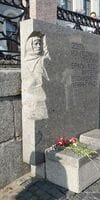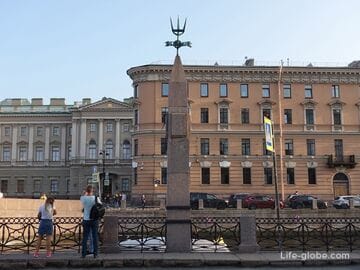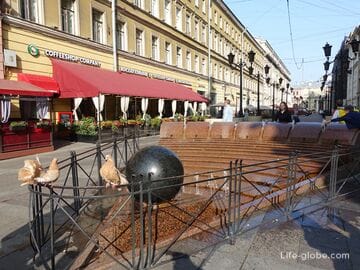The memorial Sign "Blockade Glade" is one of the most significant monuments of the siege of Leningrad in St. Petersburg.
The memorial sign is also known as "Blockade Wormwood" and "Days of the Blockade".
The memorial sign was installed in 2001 in the very center of St. Petersburg on the descent of the Fontanka River embankment, opposite the house at number 21.
The house at number 21 is a historical building-the former Shuvalov Palace, which now houses the Faberge Museum with a collection of Russian jewelry and decorative arts of the 19th and 20th centuries, the pearl of the collection of which are Faberge products, including imperial Easter eggs. Read more about the Faberge Museum (Shuvalov Palace)…
The monument "Blockade Hole" serves as a symbol and reminder of the tragic fate of Leningrad-the blockade during the Great Patriotic War.
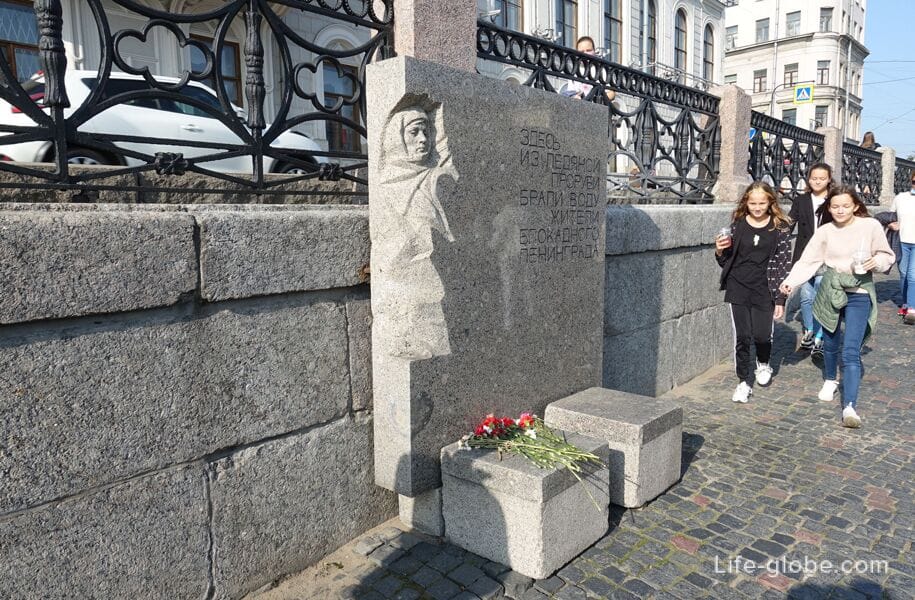
During the siege of Leningrad and the lack of food, water was synonymous with the continuation of life. Vodokanal, because of the bombing and frosts in the winter months, rarely supplied water, thus local residents had to cut holes in reservoirs (rivers and canals) and draw water from there. As a result, long queues gathered at the ice holes, and people were forced to stand for a long time for water in the cold.
The memorial sign was created on the initiative of the main artist of the city, I. G. Uralov, by the sculptor B. A. Petrov and the architect S. P. Monovalov; and opened on January 21, 2001 on the site where the ice hole existed during the days of the blockade.
The monument is a slab of gray granite with a relief in the form of a female profile. The size of the monument is 1.5 by 1.8 meters. The monument bears the inscription "Here the inhabitants of besieged Leningrad took water from an ice hole".
People bring flowers and light candles to the memorial plaque.
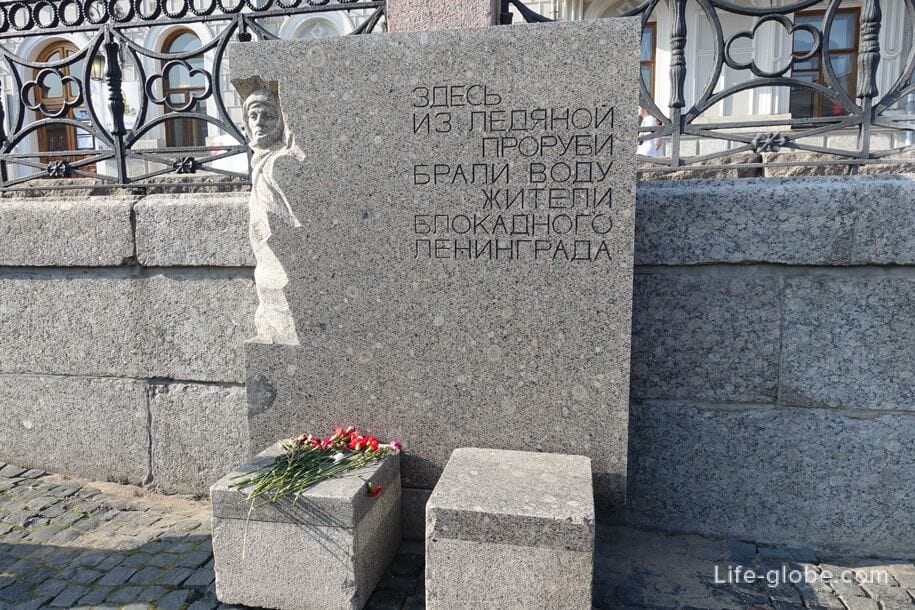
The evidence of the children of the blockade about the existence of the ice holes is contained in the " Blockade Book:
"We got up on our knees near the ice hole and scooped up water with a bucket. I always went with my dad, we had a bucket and a big can. And while we are delivering this water, it, of course, is already turning into ice. They brought it home, thawed it out. This water, of course, was dirty. Well, they boiled it. For food a little, and then for washing it was necessary. I had to go for water more often. And it was terribly slippery. It was very difficult to go down to the hole. Because people were very weak: often he would fill a bucket with water, but he could not get up. They helped each other, dragged each other up, and the water spilled again."
Almost immediately after the opening-on January 30, 2001, the monument was lost. The second opening took place on January 18, 2003.
Today, the memorial sign "Blockade Ice Hole" is included in the" Book of Memory of the Great War"; it is included in the excursion routes dedicated to the Great Patriotic War; and on the day of the blockade breakthrough, solemn ceremonies and actions of memory are held at this memorial plaque.

Practical information
The memorial sign "Blockade Wormwood" is installed near the waters of the Fontanka River, near Anichkov Bridge (Nevsky Prospekt), near the house located at the address: Fontanka River Embankment, 21.
Coordinates of the memorial sign: 59°56'05" N 30°20'36" E (59.934722, 30.343333).
Nearest metro stations: "Gostiny Dvor", "Nevsky Prospekt", "Mayakovsky" and "Ploshchad Vosstaniya".
All accommodation facilities in St. Petersburg, including in the city center and more remote from it, can be viewed and booked here




